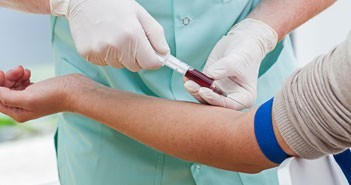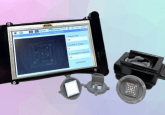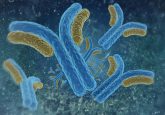Paper-based blood test could provide early Lyme disease diagnosis

Researchers have published a study in ACS Nano detailing the design of a handheld, paper-based device that detects antibodies against tick-borne bacteria Borrelia burgdorferi in serum samples. This paper-based blood test could improve the diagnosis of Lyme disease soon after infection.
Lyme disease is caused by a tick carrying the bacteria B. burgdorferi burrowing into skin. Once the tick is removed, early symptoms of Lyme disease such as a characteristic skin rash, fever, headache, chills and muscle aches can present. If not treated promptly with antibiotics, more severe symptoms, such as facial palsy, nerve pain, heart palpitations and arthritis can occur.
About 300,000 cases of Lyme disease are diagnosed in the United States each year, according to the United States Centers for Disease Control and Prevention. However, 10–20% of infected people do not develop the rash. Previously, diagnostic blood tests were slow, costly or insensitive at early stages, when treatment is most effective.
However, corresponding author Aydogan Ozcan (University of California Los Angeles, CA, USA) and colleagues reporting in ACS Nano have developed a handheld, paper-based blood test that is inexpensive and could be used to quickly and sensitively diagnose Lyme disease at the early stages. The paper-based blood test has a sensing membrane that contains several spots covering seven bacterial antigens and a synthetic peptide, which works to detect antibodies against the B. burgdorferi bacteria in serum samples. Antibodies from the serum samples that attach to the spots are detected by a color change in the solution. The color change depends on the quantity of captured antibody and is analyzed using a smartphone-based neural network to determine whether the samples are positive or negative for Lyme disease.
The researchers analyzed 50 blood samples that were taken from individuals with or without early-stage Lyme disease with the paper-based blood test demonstrating 96.3% specificity and 85.7% sensitivity. In addition to being more sensitive than existing methods, the test costs only 42 cents and requires only 15 minutes to run.
Sources: Ozcan A, Joung HA, Ballard ZS et al. Point-of-care serodiagnostic test for early-stage lyme disease using a multiplexed paper-based immunoassay and machine learning. ACS Nano doi:10.1021/acsnano.9b08151 (2019)(Epub ahead of print); www.eurekalert.org/pub_releases/2019-12/acs-ptc121619.php






